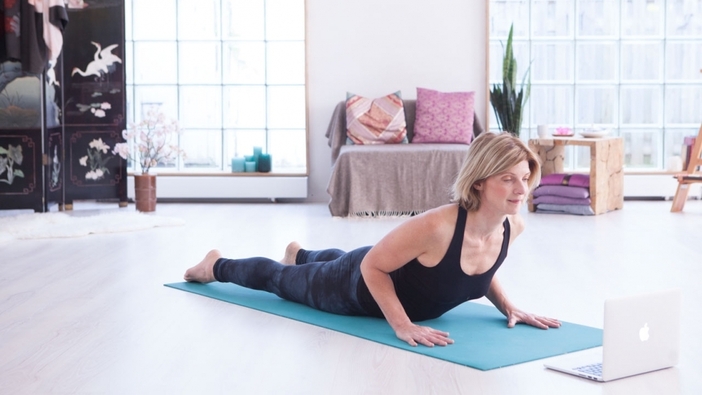
Thoracic tension - finding relief with yoga
Thoracic pain is not as common as lower back or cervical (neck) pain, mainly because the vertebras don’t move as much but tension is fairly common. Whether you have experienced thoracic pain or tension, you can find relief through yoga.
Thoracic Pain
Thoracic or mid-back pain is often felt between or behind the shoulder blades and the usual cause is some form of muscular tension in the area.
Thoracic Tension
Thoracic tension is quite common among people with bad posture. Sitting for long hours in a slouched position might lead to tension in the thoracic spine. This slumped posture can also be caused by our mood...but whatever the cause, the question is.... what is the solution?
Tips for relieving mid-back pain
Body - If you know that you tend to have poor sitting habits, the first thing you can do is to make sure you sit correctly whether at work, in front of your computer or at home when you relax.
Mind - Our mood also affects the way we hold our spine. Feeling low can sometimes lead to collapsing in the chest and slumping. A simple thing you can try is to “look up”! Try it next time you feel down, just gaze at the horizon, roll your shoulders back and down and see how you feel.
Stretch and strengthen your thoracic spine with Véronique
Learn a series of asanas to release the thoracic spine, stretch the serratus anterior and strengthen the trapezius. You can incorporate these exercises very easily into your day.
What muscles are involved in thoracic tension?
When ‘slumping’ becomes a habit, it obviously affects the muscles. There are many muscles that contribute to thoracic tension, but the two main ones for me are:
Serratus Anterior - 'boxer's muscle'
The serratus anterior muscles connect the shoulder blades to the ribs. They pull our shoulder blades forward onto our ribs. They are sometimes called the ‘big swing muscles’ or the ‘boxer’s muscles’ as they are the muscles engaged to pull the shoulder blade forward and around the ribcage when the boxer throws a punch.
When we slouch forward, the action of this muscle becomes constant.. making this muscle short, tight and overworked!
If you want to locate them, extend your left arm in front of you (you could do it on the other side too!), move it across your torso underneath your right armpit, wrapping your hand around towards your right shoulder blade.
Trapezius
Our trapezius muscle is a very large muscle on our back. One of the many jobs of this muscle is to retract (pull back) and depress (pull down) our shoulder blades. Obviously, when we slump forward, the shoulder blades have a tendency to stick to our rib cage because of the tight serratus anterior muscles and our trapezius is stretching and straining trying to pull them back. This greatly weakens the muscle, gradually making it less able to do its job.
Release, stretch and strengthen
So if you have a tendency to slump forward, you need to focus on two complementary actions: to stretch the serratus anterior muscles and to strengthen the muscles around the shoulder blades! It is necessary to do both.
Daily routine - practise off the mat!
You might not have the time to watch the video every day – and you might get bored of my voice too :) - but you can still practise. No excuse!
- When sitting on a chair, for instance, you can easily sit on the front edge of your chair, extend the arms back to take hold of the sides of the chair, inhale and open the chest.
- And when you feel like slouching on the couch, roll up a blanket instead and lie down on it. Place it along the spine to feel all the muscles around the spine melt and release.
- You can also place the rolled blanket across your mid-back, about the level of your lower breastbone and feel your chest opening. Be sure to support your head if your chin juts up. Feel how it helps you relax and breathe more freely.
Hopefully this will improve your posture and help you relax!
Namaste
Véronique
